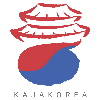Korean Lessons ᚛ Level 2 - Korean for Beginners #1 (Lessons 31 to 60) ᚛ Lesson 34 - Can in Korean, To be able to / Cannot, Not to be able to [-(으)ㄹ 수 있다 / -(으)ㄹ 수 없다] [못]
Can in Korean, To be able to / Cannot, Not to be able to [-(으)ㄹ 수 있다 / -(으)ㄹ 수 없다] [못]
Can do something, to be able to do something
In Korean, to indicate the ability or possibility of doing something, we can go by the following form:
[Modifier -(으)ㄹ] 수 있다
- 하다 (= to do) → 할 수 있다 (= can do / to be able to do / to have the ability to do)
- 먹다 (= to eat) → 먹을 수 있다 (= can eat / to be able to eat / to have the ability to eat)
- 오다 (= to come) → 올 수 있다 (= can come / to be able to come / to have the ability to come)
Reminder: the modifier -(으)ㄹ
수 있다 is used to indicate the ability to perform an action. The verb 있다 can then be conjugated in all the tenses seen so far.
신문을 읽을 수 있어요.
→ I can read the newspaper.
그 편지를 받을 수 있었어요.
→ I could receive this letter.
매운 음식을 먹을 수 있어요.
→ I can eat spicy food.
그 아기는 이제 걸을 수 있습니다.
→ This baby can walk now.
저 아이는 스스로 신발을 신을 수 있어요.
→ This child can put on his shoes by himself.
Cannot, not to be able to - 수
As we saw in the lesson on negation in Korean, the opposite verb to 있다 is 없다. As a result, it is possible to indicate the inability or impossibility of performing an action in the following way:
[Modifier -(으)ㄹ] 수 없다
수 없다 is used to indicate the inability to perform an action. The verb 없다 can then be conjugated in any tense seen so far.*
아직 시작할 수 없어요.
→ I can’t start yet.
그 비밀을 말할 수 없었어.
→ I couldn’t tell this secret.
야채를 작게 썰 수 없어요.
→ I can’t cut the vegetables into small pieces.
Cannot, not to be able to - 못
Learn more
Differences between 수 and 못
Learn more
Summary table of structure
Learn more
Exercises
Learn more
Get two printable eBooks containing EVERYTHING you need to know to master Korean conjugation. You’ll find all the most commonly used verb forms in Korea, explanations of the many exceptions, detailed conjugation tables for 500 essential verbs and adjectives, and over 1,000 example sentences for everyday situations to help you use these verbs correctly. An absolute must-have no matter your level in Korean!
Learn more

